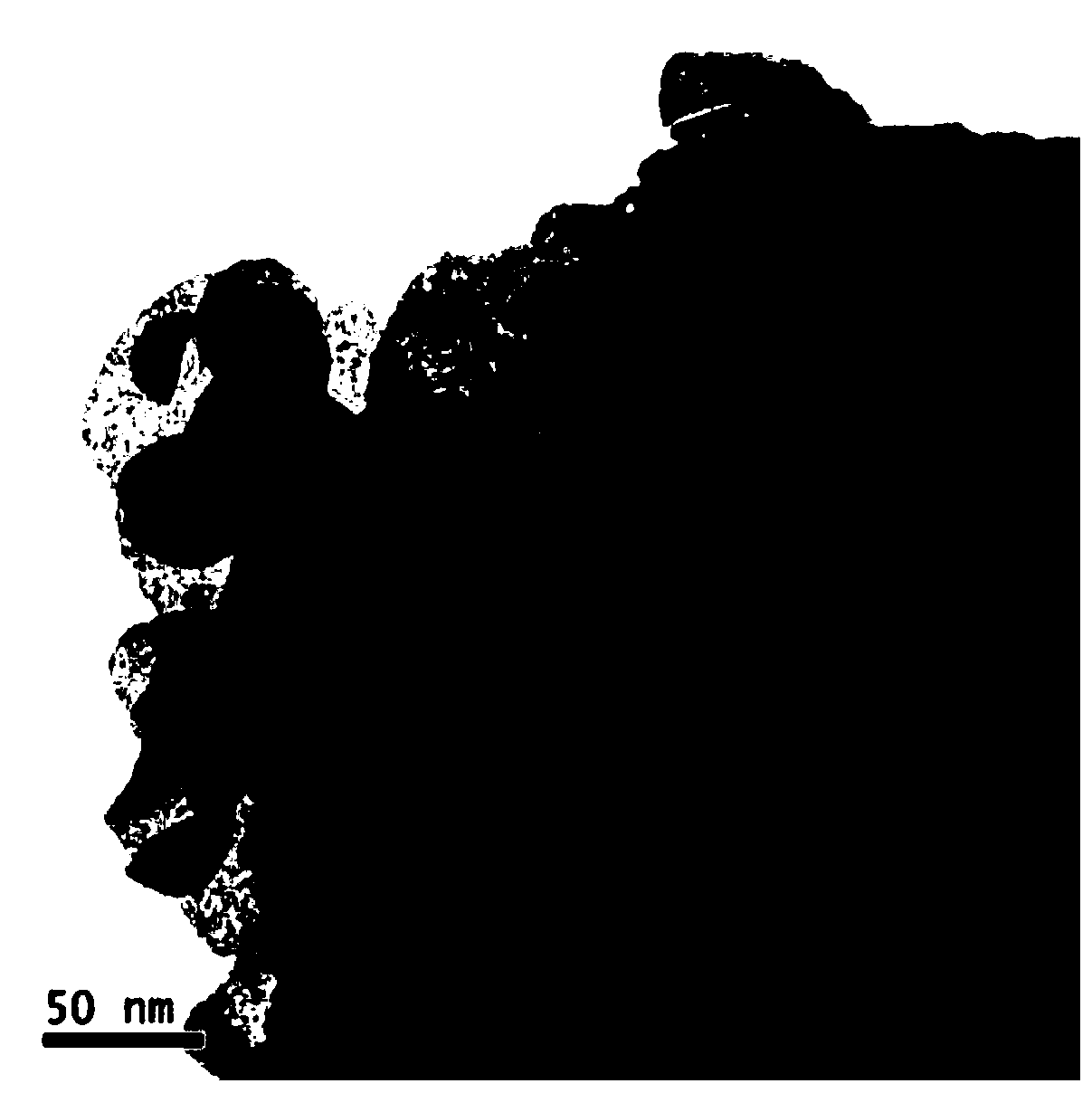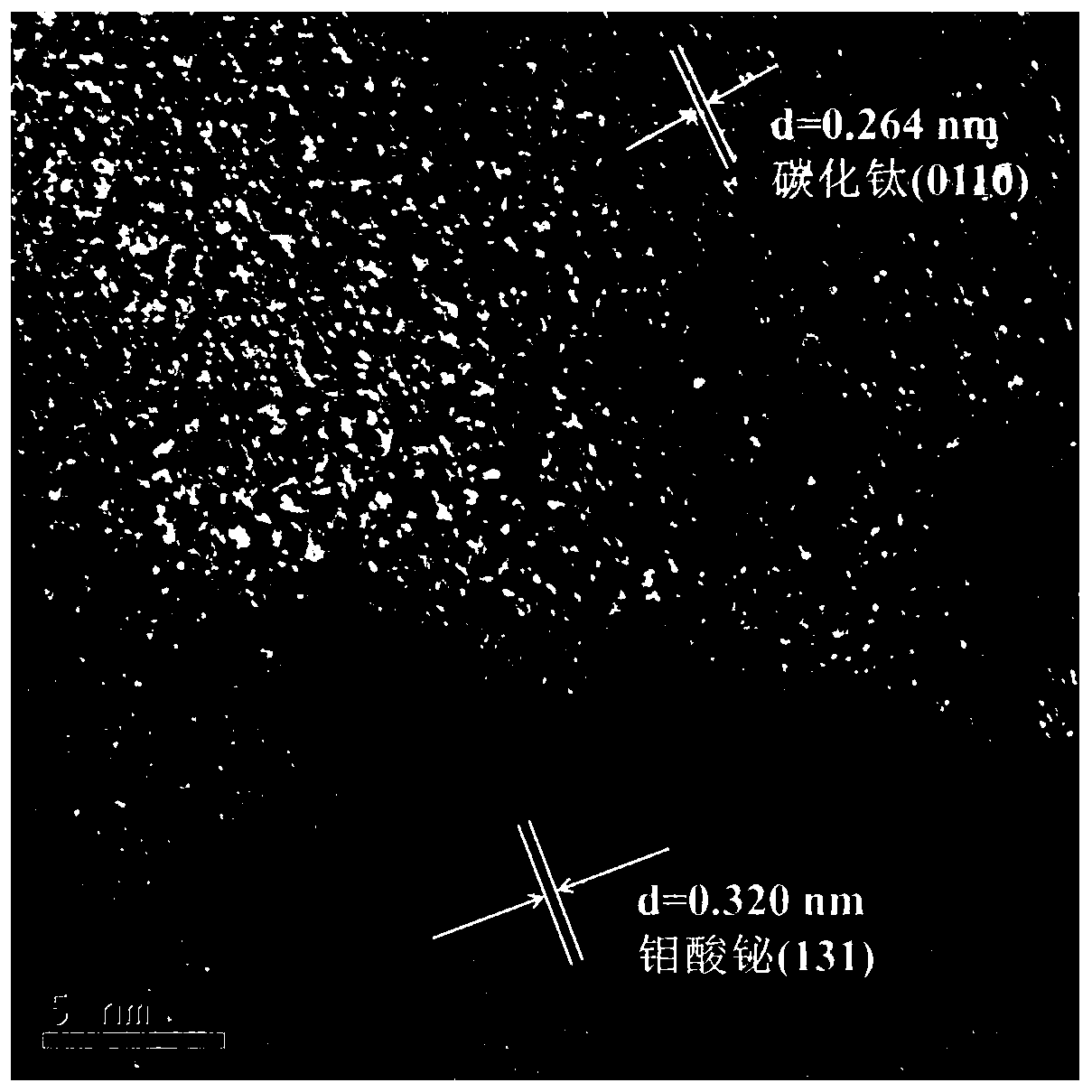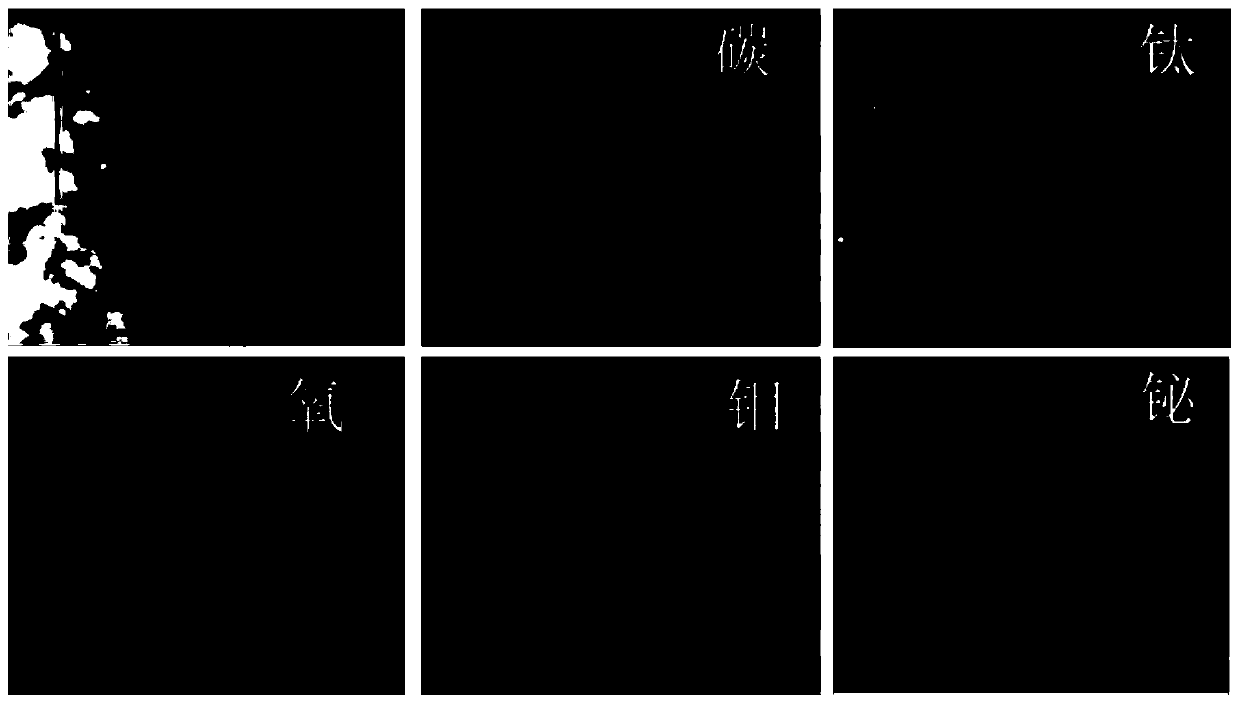Bismuth molybdate/titanium carbide heterojunction two-dimensional photocatalytic material as well as preparation method and application thereof
A photocatalytic material, titanium carbide technology, applied in physical/chemical process catalysts, metal/metal oxide/metal hydroxide catalysts, chemical instruments and methods, etc., can solve complex preparation methods of two-dimensional layered materials, catalytic Performance impact is large, harsh conditions and other issues, to achieve the effect of improving catalytic performance, inhibiting recombination, and accelerating separation
- Summary
- Abstract
- Description
- Claims
- Application Information
AI Technical Summary
Problems solved by technology
Method used
Image
Examples
Embodiment 1
[0037] A bismuth molybdate / titanium carbide heterojunction two-dimensional photocatalytic material comprises layered bismuth molybdate and titanium carbide nanosheets, and the layered bismuth molybdate is supported on the titanium carbide nanosheets.
[0038] In this embodiment, the mass ratio of titanium carbide nanosheets and layered bismuth molybdate in the bismuth molybdate / titanium carbide heterojunction two-dimensional photocatalytic material is 2:1000.
[0039] In this embodiment, the layered bismuth molybdate has a single-layer layered structure with a thickness of 1.02 nm; the thickness of titanium carbide nanosheets is 1.98 nm.
[0040] A preparation method of the bismuth molybdate / titanium carbide heterojunction two-dimensional photocatalytic material of the above-mentioned present embodiment, comprising the following steps:
[0041] (1) Preparation of titanium carbide nanosheets
[0042] (1.1) Accurately weigh 0.5g of titanium aluminum carbide and add it to the mi...
Embodiment 2
[0047] A bismuth molybdate / titanium carbide heterojunction two-dimensional photocatalytic material is basically the same as in Example 1, the only difference being that in the bismuth molybdate / titanium carbide heterojunction two-dimensional photocatalytic material in Example 2, the titanium carbide nanometer The mass ratio of flakes and layered bismuth molybdate is 5:1000.
[0048] A preparation method of the bismuth molybdate / titanium carbide heterojunction two-dimensional photocatalytic material in the above-mentioned present embodiment is basically the same as the preparation method in Example 1, the only difference is that the raw materials in the preparation method in Example 2 The dosage of the two-dimensional layered titanium carbide nanosheets is 0.0031 g.
[0049] The bismuth molybdate / titanium carbide heterojunction two-dimensional photocatalytic material prepared in Example 2 is named "5:1000 bismuth molybdate / titanium carbide".
Embodiment 3
[0051] A bismuth molybdate / titanium carbide heterojunction two-dimensional photocatalytic material is basically the same as in Example 1, the only difference being that in the bismuth molybdate / titanium carbide heterojunction two-dimensional photocatalytic material in Example 3, titanium carbide nanometer The mass ratio of flakes and layered bismuth molybdate is 10:1000.
[0052] A preparation method of the bismuth molybdate / titanium carbide heterojunction two-dimensional photocatalytic material in the above-mentioned present embodiment is basically the same as the preparation method in Example 1, the only difference is that the raw materials in the preparation method in Example 3 The dosage of the two-dimensional layered titanium carbide nanosheets is 0.0062 g.
[0053] The bismuth molybdate / titanium carbide heterojunction two-dimensional photocatalytic material prepared in Example 3 is named "10:1000 bismuth molybdate / titanium carbide".
[0054] figure 1 It is a transmissi...
PUM
| Property | Measurement | Unit |
|---|---|---|
| thickness | aaaaa | aaaaa |
| thickness | aaaaa | aaaaa |
Abstract
Description
Claims
Application Information
 Login to View More
Login to View More - R&D
- Intellectual Property
- Life Sciences
- Materials
- Tech Scout
- Unparalleled Data Quality
- Higher Quality Content
- 60% Fewer Hallucinations
Browse by: Latest US Patents, China's latest patents, Technical Efficacy Thesaurus, Application Domain, Technology Topic, Popular Technical Reports.
© 2025 PatSnap. All rights reserved.Legal|Privacy policy|Modern Slavery Act Transparency Statement|Sitemap|About US| Contact US: help@patsnap.com



